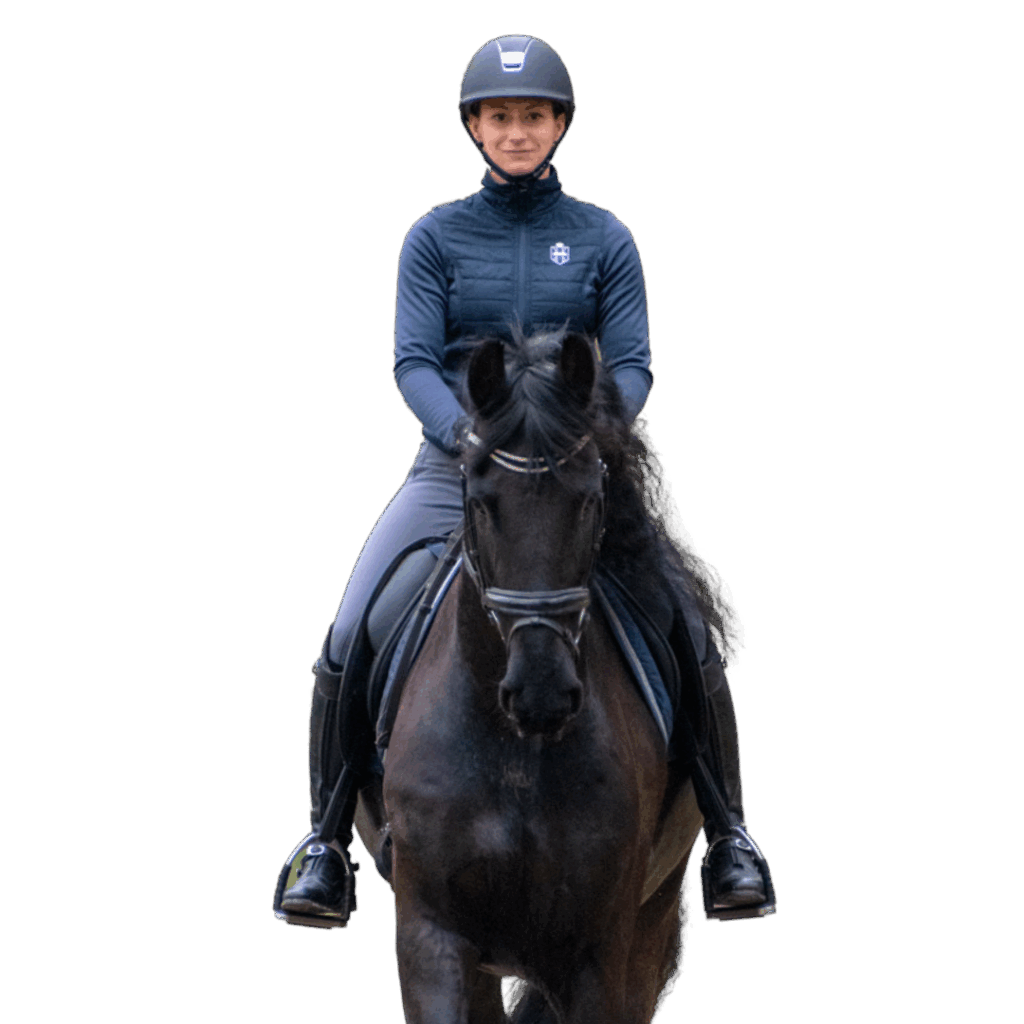
Boost your riding position!
Online training
Do you struggle with sitting still, feel restless in your legs, or notice that your toes point outward? Are lateral movements not going as smoothly as you’d like, and do you keep trying without making any progress? Then this training is exactly what you need! With the proven, logical method of the online training, you’ll immediately improve your posture and seat.
Insight into the foundations you won’t find anywhere else
You really don’t need to be a qualified biomechanist to improve your seat. The Sit SMART Training isn’t about complex theory or “just do it this way” instructions – it’s about logic and insight.
You’ll learn to think in terms of cause and effect: How does your horse move? How do you move? And how can the two work together in harmony?
By simply understanding why something does or doesn’t work, you’ll naturally start riding better – with more feel, confidence, and control.
Sit SMART!
What you will learn
🧘♀️ Module: Solid foundation
Everyone can tell you what the ideal posture and seat should look like. And while it’s doable when you’re standing still, things get much more difficult once you start moving.
During riding lessons, most of the focus is placed on the horse’s movement—not the rider’s. Instructions stop at “heels down, toes in, and sit up straight.” But why does that seem so natural for one rider, while you might be struggling hard without seeing results?
The answer lies in the way we move.
Not everyone has the same body or movement patterns, so there’s no one-size-fits-all solution. What works for one person might not work at all for another. It’s about understanding how you can use your body functionally so that you can follow the horse’s movement effectively. Only then will you achieve correct posture and seat, not something forced, but something that feels natural.
🌀 Module: Move to sit still
Have you ever noticed that maintaining your balance and a functional posture feels easy when you’re standing still, but becomes much more difficult once you start walking, trotting, or cantering?
What changes in those moments is the horse’s movement. If you’re not moving in sync with that movement, it becomes nearly impossible to maintain your balance and posture.
A functional posture and the ability to follow the horse’s movement are therefore deeply connected. But how exactly does a horse move in the different gaits? And how can you, as a rider, follow that movement while keeping your posture?
Many riders simply get on and start riding without really thinking about what’s actually happening underneath them.
In this module, you’ll learn how the horse moves in the three basic gaits, so you can understand what’s happening as you ride—and how you, as a rider, can respond to that.
You’ll learn to recognize and follow the horse’s movement in the walk, trot, and canter. Because only when you truly understand what’s happening beneath you can you start to move along consciously—with balance, coordination, and feel.
✅ Module: Riding technique
We’ll look at how seat, leg, and rein aids can be used effectively in turns and lateral movements.
No random or conflicting signals, but clear communication with the horse—without noise. Not just “doing something” with your aids, but using them purposefully and logically: riding with a plan, not by chance.
In practice, instructors often give directions as if they were riding the horse themselves: “More inside leg,” “Relax your inside hand,”—all with the goal of improving the horse’s way of going. But when you’re training at home without guidance, these phrases can feel meaningless, because no one explained why the aid was needed. A rider who understands the “why” can think independently and make intentional corrections.
Because when you know exactly which aid you’re giving, when you’re giving it, and why—then you can also analyze why an exercise did or didn’t work. That gives you clarity and control.
🤸♀️Module: Most effective exercises
Choose the exercises that truly add value for you.
Of course, all exercises are good for your body—but let’s be honest: most riders don’t have the time (or the motivation) to spend hours training off the horse. That’s why we focus on targeted and effective exercises that give you the biggest results in the least amount of time.
By focusing on what you really need, you’ll achieve more—and stay motivated.
Smart training, not more training.
🦵Module: Basic rider anatomy
Every rider faces their own challenges when it comes to functional posture, following the horse’s movement, and using the different aids independently.
That’s completely normal—everyone is unique in their body and how they move. On top of that, factors like balance, strength, symmetry, and coordination all play a big role.
We’ll take a look at the rider’s basic anatomy and explore which muscles and joints influence your posture and movement. You don’t need to be a trained physiotherapist, but this knowledge will give you a better understanding of the specific muscle groups involved in riding posture and movement—and where potential areas for improvement lie.
When you know which muscles need extra attention, you can train more purposefully. That way, you’ll be able to strengthen the right muscles and improve your balance and symmetry in a targeted, effective way.
The result?
📈 You grow as a rider in knowledge, confidence, and effectiveness. You ride with structure and improved posture and seat!
